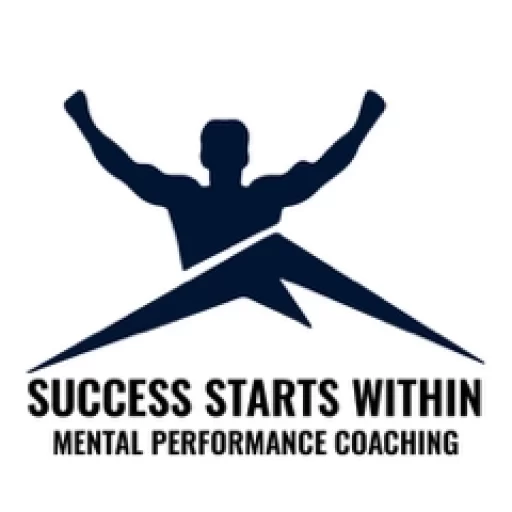Do you ever have really negative thoughts during games? A prime example of this is after you make a mistake. Are the thoughts you have then usually helpful or hurtful?
What about before games? Do you ever have fearful thoughts? Where you’re thinking about how much you don’t want to make a mistake.
Or maybe you feel a lot of anxiety before a game. What are you thinking about then?
Whenever you have negative, fearful, anxious, or any other form of unhelpful thoughts, they are largely automatic. Meaning, you aren’t consciously choosing to think them at that moment.
They are happening automatically. But these thoughts also cause you to underperform. So you want to work on changing your automatic thoughts. That’s where the process of cognitive restructuring comes into play.
What is Cognitive Restructuring
When you are experiencing constant feelings of fear, anxiety, self-doubt, or any other negative emotions and states, the first place you want to look is your thoughts.
When unhelpful and negative thoughts are left unchecked, they lead to negative emotions and can eventually take all the joy out of your sport. That’s why it’s so important for you to take control of your thoughts.
The process of cognitive restructuring helps you gain such control over your thinking.
Cognitive restructuring, sometimes referred to as cognitive reframing, is a technique derived from cognitive behavioral therapy (CBT). If you’re unfamiliar with CBT, it was developed by Dr. Aaron Beck in the 1960s.
He was researching and working with individuals on depression and discovered that these individuals had consistent automatic patterns of negative thoughts. These patterns included thoughts about themselves, the world, and the future.
As a result of his research, Dr. Beck decided to help patients identify and evaluate their automatic thoughts. This proved to be the beginning of CBT, the use of which is now widespread throughout the world.
Cognitive restructuring is the process within CBT, during which negative patterns of thinking are located, challenged, and altered in favor of a positive alternative.
The Thought-Feeling Cycle
One of the reasons cognitive restructuring is so important, and why it works, is due to a concept called the thought-feeling cycle.
We may believe that our feelings are a direct result of whatever situation we’re in. Such as you’re feeling bad because of the mistake you just made.
However, that’s not the case. While the circumstances do play a large part, they are not the true cause.
Instead, it is the thoughts that follow the situation (so in that example, the mistake) that are to blame for the negative emotions.
Many times the thoughts happen in a split second, so you are unaware of them. But, a thought precedes an emotion, no matter whether it is unconscious or conscious.
After you have a thought, it is then followed by an emotion. If you are thinking in a negative way, the result will be a negative feeling. Of course, when you feel badly, your next thoughts will likely once again be on the negative side. That is where a cycle forms.
If you are not aware of what is happening, this loop can happen over and over.
This is why during a game, one mistake can turn into many more. Because you are focused on the mistake and you are carrying the negative emotions associated with that mistake with you into the next play.
Benefits of Cognitive Restructuring for Athletes
Now that you know what cognitive restructuring is, how can you tell if it will help you as an athlete?
Well, as a mental performance coach who’s worked with athletes from all over the world, I can confidently say that all athletes can benefit from cognitive restructuring.
Because the process involves substituting negative and unhelpful thoughts for more positive and productive ones.
And the more productive your thoughts are, the more they will help to increase your performance.
Here are the main benefits of using cognitive restructuring in sports:
- Increased Confidence: the more confident your thoughts are, the more confident you will feel when you play.
- Improved Focus: by gaining more control over your thoughts, you will be able to recognize what you’re thinking about during games and control your focus better.
- Increased Enjoyment: beating yourself up and having negative self-talk can easily cause you to lose the love for the game.
- Stronger Mental Toughness: a key characteristic of mental toughness is positive self-talk. By using cognitive restructuring, you will develop a stronger mindset in sports.
- Greater Motivation: the more your thoughts are working in your favor, the more motivation you will have to train and compete.
- Decreased Fear & Anxiety: since your thoughts are a leading cause of anxiety in sports and fear, by altering your thoughts you will reduce your fear and anxiety surrounding your game.
How to Restructure Your Thinking
To restructure your thinking as an athlete, there are three steps that must be followed.
Step #1: Locate Thought Patterns
The first step in the cognitive restructuring process is to locate the thought patterns that are causing the negative feelings.
You must first find out what these patterns are before you can hope to change the way you’re feeling. In order to accomplish this, there are three areas you must look into. First, you must determine when you are having negative feelings.
Next, you must discover what thought patterns are taking place during these times. Lastly, you have to see what the emotional consequences are of the thoughts.
When
This is the step in the process that requires you to pay attention to how you feel on a daily basis. The object of cognitive restructuring is to help ourselves be more confident and positive in situations that usually cause us to feel negatively.
To do just that, you must find the times during your practices or game in which you are the most uncomfortable, negative, and fearful.
If you are in a constant negative thought cycle, it may seem like you feel that way all the time. That’s okay but try to think about a specific situation where you feel your worst. This will help to discover what the thought patterns are.
A good strategy is to take a few days, maybe even a week, and pay attention to all the times you aren’t feeling great. You can keep a journal with you or just write in one at night, but it’s a good tool to track the times you felt negatively.
After doing this a few times, you should be able to see a pattern of situations that are leading to these states.
What
After pinpointing when you are feeling the most negative, it is time to figure out what thought patterns are taking place.
This will take the same kind of conscious awareness as locating when. Once you’ve decided on the times that your mind tends to turn sour, you have to pay close attention to what you are thinking in those situations.
I like to use the same sort of strategy as you just did, by recording all the thoughts that you have during these times. You want to write them down because it will help during the next step.
How
The last area you must look into when discovering the current thought patterns that are present is the emotional response.
This should be easy since it was the emotional response that drove you to find the situation in the first place. But, you are wanting to get a little more specific.
You want to really think about what the consequences are of each thought. Ask yourself:
- How do I feel?
- Does one series of thoughts lead to another?
- How am I acting as a result of my emotional response?
- Why am I feeling this way?
All of these questions will be helpful when it comes to reconstructing the way you think.
Step #2: Generate Alternatives
The second step in the cognitive restructuring process is to come up with a list of alternatives for your current thought patterns.
In the previous step, you should have composed a list of all the current negative thought patterns that you have as an athlete.
Now you want to come up with an alternative way of thinking during times when you normally have negative thoughts. There are two ways to accomplish this, creating situational alternatives and general affirmations.
Situational Alternatives
For specific situations in which you have the most negative thoughts, you can come up with an alternative plan for how you perceive what is happening.
For example, if you get nervous before a game, then you want to come up with a good alternative for that moment.
The same is true if you get upset after a mistake. Create alternatives for specific situations within your game that typically lead to you thinking negatively.
General Affirmations
These involve more general statements you want to say to yourself as an athlete. For these, think about your strengths and things you can say to yourself that will increase your confidence.
A fun way to perform this part of the exercise is to imagine you were talking to a teammate and trying to help them feel better. What would you say to them?
Step #3: Replace Negative Thoughts with Positive Ones
Step three of the cognitive restructuring process is where you will use all the information gathered in the previous two steps.
At this point, you should have an understanding of when you have negative thinking, what that thinking consists of, and a list of alternatives. It is now time to put those alternatives into practice.
The first way this can be done is by utilizing a daily practice of affirmations. Take the list of alternatives you made and come up with about five to ten positive phrases. These should all be in the present tense.
Some examples include:
- I am confident.
- I am a great player.
- I trust in my skills.
- I believe in myself.
- My hard work is paying off.
Once you get past the initial corniness of repeating these phrases, you begin to see how well they work to shift the overall perception you hold about yourself.
The second way is to be mindful of when you are in a situation that usually causes negative thinking. Be prepared by having the alternatives you created at the ready.
The next time you are in such a situation, do not wait until the negative thoughts begin to appear, proactively start implementing your alternatives.
Final Thoughts
Cognitive restructuring is a powerful tool for athletes to use.
Your thoughts drive how you feel. And as an athlete, you want to be sure you’re in the best emotional state to perform. That means your thoughts need to be working in your favor during a game.
To regain control of your thinking you can use cognitive restructuring. By doing so, you will be sure your mind is becoming an asset to you as a player, rather than a liability
If you have any questions about cognitive restructuring or any other sports psychology topic, please feel free to reach out to me.
Thank you for reading, and I wish you the best of success in all that you do.





